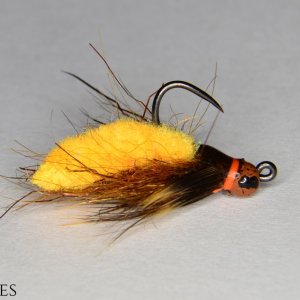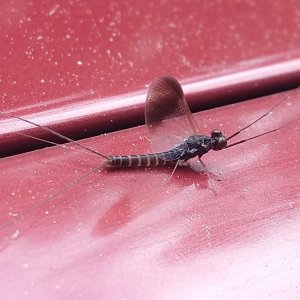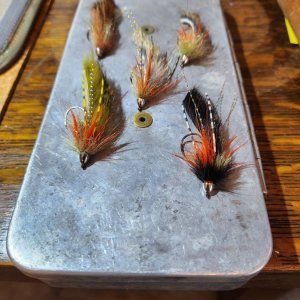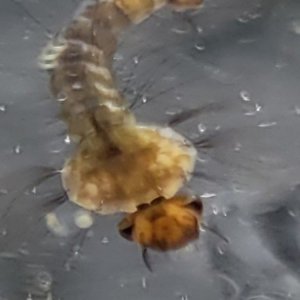For awhile now I’ve been wanting to bring a fly rod along on our boat. The issue is we have a sailboat and casting would be flirting with disaster so we’ve always used trolling gear and deep sixes. I’m wondering about bucktailing in our wash while we are trolling under way to get my fix. I’ve tied up a couple Tofino Special type flies for coho and humpys. Should I be using a floating line or one of my sinking beach lines for this? Am I OK with a six weight as long as I’m trolling a little slow?
Bucktailing:
As Nick noted, folks I know who have tried bucktailing in Puget Sound generally find that technique not very successful. I've had great success in areas like Sequim, Neah Bay, etc., and off of Vancouver Island.
Slow is no go; in my opinion, going about 5-6 knots is the speed. Also, different salmon prefer different speeds. You want the fly to slightly 'hop and pop' when it's in the prop wash. Going slow is trolling, which is different than bucktailing.
If you are truly 'bucktailing', your fly will be maybe 20' behind the boat in the prop wash, whatever the distance prop wash forms behind your boat. Prop wash is different for different boats. The prop wash gives the fly movement. the line you want to use is a function of getting into the prop wash. I've used sink tip lines with great success, but I was fishing from a boat(s) with lower stern heights than you probably have with your sailboat, allowing me to keep the rod and fly more in plane (in line) with each other. You want the fly to be slightly subsurface, popping up on the surface now and then. Think of the techniques employed by folks who fish for billfish, tuna, dorado/mahi mahi, etc. - similar concept in presentation.
If you bucktail or troll, you should use a very short tippet/leader. Experienced folks I know who bucktail use a short piece of mono, say 20 pound. Landing percentages increase dramatically and breakoffs occur less frequently. The fish are fired up when they strike and usually are not line shy.
I would strongly encourage use of heavier rods than a 6 weight but, if that's what you have, well it sounds like 6 weight it is. It's not as much about fighting the fish as it is landing the fish; a heavier rod will allow you to control the fish better once you get up to the boat. And, you never know when a big fish might show up. I was off Tofino, Vancouver Island 20 years ago when a guy in our group hooked a 40 pound class chinook on his 6 weight with an Orvis Battenkill disc drag reel. He eventually caught the fish, an hour plus later and after a lot of following with the boat. This kind of hookup is very much the exception, but it can happen!
Also, your fly will twist; you may want to strongly consider using a swivel at some place in your system.
Hope this helps.













